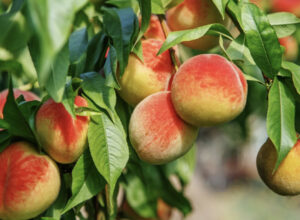Ficus Tree Care: Your Guide to a Flourishing Indoor Plant

In the world of indoor plants, ficus trees are the crown jewels. With their resplendent, emerald-green leaves and air-purifying prowess, they’ve captured the hearts of plant enthusiasts across the globe. Whether it’s the elegant Weeping Fig (Ficus benjamina), the iconic Fiddle Leaf Fig (Ficus lyrata), or the robust Rubber Plant (Ficus elastica), ficus trees bring a touch of nature’s grandeur indoors. Each species has its unique allure, making it easy to find the perfect ficus to complement your home’s aesthetic.
But here’s the catch – while ficus trees are relatively forgiving, they do demand a bit of TLC. Without proper care, even the most vibrant ficus can start to lose its luster. Leaves may wilt, growth may stagnate, and your beloved ficus may seem more “feeble” than “fig-tastic.” However, fear not, because in this comprehensive guide, we’re not just scratching the surface; we’re delving deep into the secret world of ficus tree care. We’ll be your green-thumbed tour guide, leading you through the enchanted forest of ficus care, so you can nurture and enjoy your ficus to its fullest potential within your home.
Choosing the Right Location
Lighting
In terms of lighting, ficus trees are quite particular. They prefer bright, indirect light. What does this mean for you as a plant owner? Well, it means you should place your ficus near a window that allows filtered sunlight to bathe it. Ficus trees do love their light, but they’re a bit like Goldilocks when it comes to it. Too much direct sunlight, and those lovely leaves might scorch. However, if you happen to have a Fiddle Leaf Fig, it’s a bit of a light hog. So, in that case, positioning it a tad closer to a sunny window could be ideal.
Temperature
Now, let’s talk about temperature. Ficus trees prefer a stable environment. Keep your indoor ficus in a room with temperatures ranging from 60°F to 75°F (15°C to 24°C). They’re not fans of drafts, sudden temperature swings, or the chilly breezes that sneak in through windows and doors. So, while they do appreciate a bit of fresh air now and then, try to avoid exposing them to harsh drafts. Providing a steady and cozy temperature will go a long way in keeping your ficus content and thriving.
Watering Wisely
Now, let’s dive into the art of watering your ficus. It might seem simple, but it’s a step where many plant enthusiasts stumble.
- Frequency: The most common pitfall in ficus tree care is overwatering. Picture this: your ficus doesn’t want to be drowning in moisture; it’s not a water lily! Instead, water it when the top inch (about 2.5 cm) of the soil feels dry to the touch. This allows you to mimic its natural habitat, where the soil isn’t perpetually soggy. Remember, ficus roots don’t like being waterlogged, as it can lead to the dreaded root rot.
- Water Quality: Your ficus appreciates a spa day with room-temperature water that’s chlorine-free. Using water straight from the tap, especially if it’s chlorinated, might send it into a bit of shock. To avoid this, let your tap water sit for about 24 hours before showering your ficus with it. This gives the chlorine time to take a back seat, making the water gentler on your plant.
- Container Choice: Imagine your ficus’s pot as its home. You’d want a cozy and secure place, right? Well, your ficus thinks the same. Ensure it resides in a pot with proper drainage holes. This keeps water from pooling at the bottom, a situation where ficus roots frown upon. It’s all about keeping the living conditions just right for your leafy friend.
Fertilizing for Growth
Just like us, ficus trees need their nutrients to thrive. Here’s how you can serve up a delicious meal for your leafy companion:
Think of the growing season (spring and summer) as your ficus’s hungry months. During this time, it’s like your plant has a never-ending appetite. To satisfy its cravings, offer a balanced liquid fertilizer every 2-4 weeks. However, when fall and winter roll in, and your ficus’s growth takes a siesta, ease up on the feeding. It’s not as ravenous during these months. But, be careful not to overdo it; always follow the instructions on the fertilizer’s label to avoid overfeeding. Nobody likes an overstuffed ficus!
Understanding the Maple Tree Root System
Maple trees, known for their beautiful foliage and shade, have extensive root systems that are crucial for their growth and stability. The root system of a maple tree is typically shallow and widespread, often extending two to three times the diameter of the tree’s canopy. Most of the roots are located in the top 12 to 24 inches of soil, allowing the tree to absorb water and nutrients effectively.
Characteristics of Maple Tree Roots:
1. Shallow and Spreading: Maple roots grow horizontally, making them more likely to interfere with lawns, sidewalks, and driveways.
2. Fibrous Roots: These roots are fine and fibrous, helping the tree to absorb water and nutrients efficiently.
3. Surface Roots: Some maple trees, like the silver maple, have prominent surface roots that can create issues in landscaped areas.
Proper care and consideration of the maple tree root system are essential when planting maple trees to avoid potential damage to nearby structures and ensure the tree’s health and stability.
Pruning and Maintenance
Your ficus tree can be a bit of a wild child, with its branches and leaves reaching out every which way. That’s where pruning and maintenance come into play:
- Trimming Routine: Just as we trim our hair to keep it looking neat, your ficus tree benefits from regular trims too. This helps maintain its desired shape and size. Get rid of any dead or yellowing leaves – think of it as a plant’s equivalent of a bad hair day. You can also snip back those leggy branches that are reaching for the stars. Pruning is like a green thumbs-up for new growth and a bushier appearance.
- Wear Protection: Now, a word of caution. Some ficus species have a bit of an attitude, with sap that can be irritating to the skin. To keep your hands happy, always wear gloves when you’re getting up close and personal with your ficus during a pruning session. You and your ficus will both appreciate it.
Guarding Against Unwanted Guests
Just like any cozy home, your ficus can sometimes attract unwanted guests. Here’s how to handle these uninvited visitors:
- Pest Patrol: It’s like running a security detail for your ficus. Regularly inspect your plant for common troublemakers like spider mites, mealybugs, and aphids. These tiny critters can sneak in unnoticed and wreak havoc on your ficus’s greenery. If you spot any of these pesky invaders, don’t panic.
- Swift Action: Time is of the essence in pest control. Treat the affected areas promptly with a gentle but effective solution like insecticidal soap or neem oil. These eco-friendly options will show those pests the door without harming your plant.
- Isolation Protocol: Just as you’d quarantine someone with a contagious cold, isolate the affected ficus to prevent the pests from spreading to other indoor plants. This way, you can ensure your entire indoor garden remains pest-free and thriving.
Remember, a watchful eye and quick action are your best weapons against these unwanted guests in your ficus’s sanctuary.
Conclusion
In conclusion, the presence of a ficus tree in your home can be a transformative experience. It’s not just about owning a plant; it’s about nurturing a living work of art that responds to your care with lush greenery and improved air quality.
- Your Green Thumb Journey: As you’ve discovered in this guide, providing the right environment and attention to detail is essential. From ensuring the perfect balance of light to mastering the art of watering and maintenance, you’re well on your way to becoming a ficus aficionado.
- Consistency is Key: One of the vital takeaways is consistency. Ficus trees, despite their elegance, can be sensitive to changes. By offering a stable and caring environment, you’re creating the best conditions for your ficus to thrive.
- A Living Masterpiece: Your ficus tree isn’t just a decoration; it’s a living masterpiece that adds life and vibrancy to your indoor space. With the knowledge you’ve gained here, you have the power to turn your home into a green sanctuary where your ficus flourishes, enhancing not only your decor but your overall well-being.
So, embrace your green thumb, enjoy the beauty of your ficus, and take pride in the improved air quality it brings. You and your ficus are on an enriching journey together, one that promises years of natural splendor and the satisfaction of nurturing a remarkable living creation.




